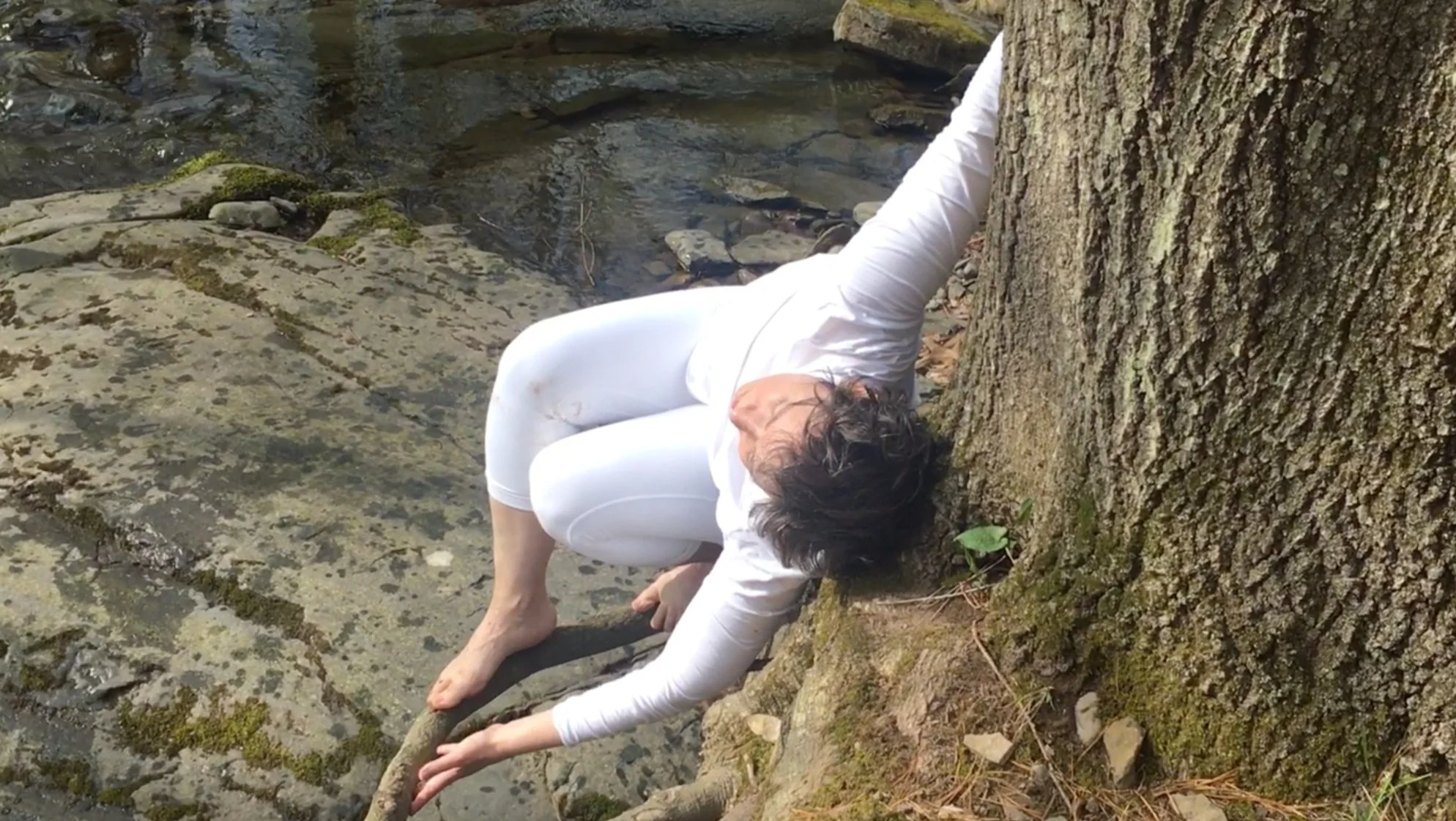Lectures
Natural Technologies: Ecokinetics and the Art of Loïe Fuller
Multimedia presentation
Jody Sperling considers the dynamic conversation between technology and nature as played out in the performance art of Loïe Fuller (1862-1928) and her own Fuller-inspired creations. A technological wizardress, Fuller advanced the technologies of lighting and projection design to conjure natural elements onstage. Sperling has been furthering Fuller’s idiom into the ecological arena with a focus on creating dances that evoke natural processes, such as melting ice and changing wind patterns. The presentation includes media representing Fuller’s oeuvre and Sperling’s recent ecokinetics productions in collaboration with ecoacoustics composer Matthew Burtner.
Delivered February 15, 2024 as part of the Center for Advance Study series at the Spurlock Museum, University of Illinois. Following the presentation, Sperling was joined by a panel discussion with John Toenjes (Dance), Chiara Vincenzi (Art & Design: Experimental Fashion), Gillen Wood (English; Earth Science & Environmental Change), Jenny Oyallon-Koloski (Media & Cinema Studies), and Kim Curtis (Theatre).
Ecokinetics: Climate-engaged Dancemaking
Multimedia presentation
The work of choreographer Jody Sperling has long explored ways of setting human motion into conversation with the environment. In this talk, she discusses her emergent dance practice of ecokinetics which focuses on cultivating a dynamic relationship between the moving body and ecological systems. Ecokinetics was conceived as a corollary to ecoacoustics, a mode of environmental music composition pioneered by her long-time collaborator Matthew Burtner. Sperling and her company, Time Lapse Dance, have used ecokinetics principles to generate choreography responding to such phenomena as melting polar ice, atmospheric circulation changes, plastic pollution, and bird migration, which have taken form in stage performances, site-specific iterations, street festivals, and film/media.
Turbulent Ice: Dance and Science in the Arctic
Multimedia presentation about dancing on the melting polar cap
In 2014, Jody Sperling accompanied a 43-day science mission to the Arctic polar cap as the first-ever choreographer-in-residence aboard the US Coast Guard Cutter Healy. She was privileged to journey to a part of the world that few ever get to see and that is in the process of radical transformation. In this compelling presentation, Sperling shares both her methods for dance-making in such an inhospitable environment as well as the science motivating the expedition. An active participant in the ship’s Ice Watch Survey team, Sperling learned about ice processes and shares her knowledge, explaining what makes sea ice so fascinating and why it’s so vulnerable to climate change. Ice’s visual splendor and motion dynamics make for a compelling subject for Sperling’s own art. The program includes dozens of visually-arresting images shot in the Arctic concludes with a screening of Ice Floe, Sperling’s award-winning movie of her polar dancing.
Loie Fuller and Early Cinema
A multimedia presentation
Early modern dancer Loie Fuller (1862-1928) created a unique art form by crafting mesmerizing, multi-media spectacles out of fabric, motion, colored lights and projections. From the 1890s through the 1920s, she enraptured audiences and visual artists with her iridescent, sculptural creations. In a period when movies were coming into being, the art of Fuller and her many imitators, or “serpentine dancers,” captured the essence of motion pictures. Instead of moving the “picture,” they fanned their ample skirts to fashion dynamic, mobile screens. Appropriately, many of the earliest performers captured on film are serpentine dancers and Fuller look-a-likes. This presentation highlights the proto-cinematic elements of Fuller’s craft as well as Fuller’s influence on the movies. Fuller’s 1908 Ballet of Light, which featured drop-screens and multiple sources of projection, brought the viewer on a fantastic geographic journey in a way that anticipated the IMAX adventure. Also discussed, will be Fuller’s own cinematic experiments, in particular her 1920 film “Le Lys de la vie.” This movie is perhaps the first to use negative images as a scenic element. The presentation features slide-show of dozens of Fuller images, screenings of rare historical footage and select video clips from Sperling’s recreations.




